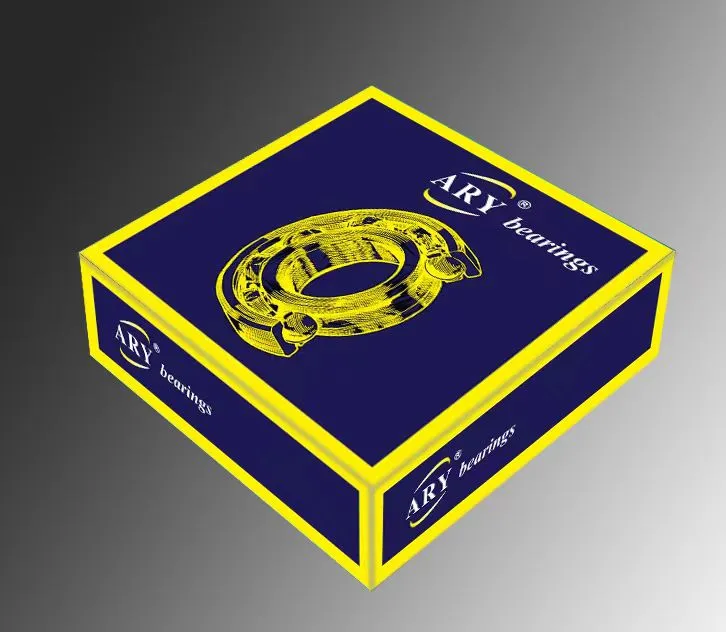
Dec . 16, 2024 09:26 Back to list
stainless thrust bearing
Stainless Steel Thrust Bearings An Overview
Thrust bearings are critical components used in various machinery and mechanical systems to support axial loads. Among the different types of thrust bearings available, stainless steel thrust bearings have gained popularity due to their superior properties, durability, and resistance to corrosion. This article explores the features, applications, and advantages of stainless steel thrust bearings, providing a comprehensive understanding of their significance in modern engineering.
Composition and Properties
Stainless steel thrust bearings are primarily made from austenitic or martensitic stainless steel. Austenitic stainless steels, such as AISI 304 and AISI 316, offer excellent corrosion resistance, making them ideal for applications in harsh environments. Martensitic stainless steels, on the other hand, provide higher strength and are often used where wear resistance is critical. The physical and chemical properties of stainless steel, including high tensile strength, toughness, and resistance to oxidation, make it a preferred choice for thrust bearings.
Design and Functionality
Thrust bearings are designed to allow rotation while supporting axial loads. Unlike radial bearings that support loads perpendicular to the shaft, thrust bearings operate in a linear motion by accommodating forces parallel to the rotation axis. Stainless steel thrust bearings come in various designs, including thrust ball bearings and thrust roller bearings. Thrust ball bearings consist of a set of balls held between two rings, while thrust roller bearings utilize cylindrical rollers for increased load capacity.
Applications
Stainless steel thrust bearings find applications across a diverse range of industries due to their versatility. In the automotive sector, they are commonly used in transmissions, engine components, and control systems. In aerospace, thrust bearings are integral to aircraft engines and landing gear systems, where reliability and performance are paramount. Additionally, in the marine industry, stainless steel thrust bearings provide exceptional service in ship propellers and steering systems.
stainless thrust bearing

Moreover, these bearings are widely utilized in manufacturing equipment, including machining tools and conveyor systems, where they support heavy loads and maintain smooth operation. The chemical industry also benefits from stainless steel thrust bearings, particularly in pumps and mixers, where exposure to corrosive substances is prevalent.
Advantages of Stainless Steel Thrust Bearings
One of the most significant advantages of stainless steel thrust bearings is their corrosion resistance. In environments exposed to moisture, chemicals, or extreme temperatures, stainless steel bearings maintain their integrity, preventing premature failure and ensuring longevity. This property minimizes maintenance requirements and reduces downtime, contributing to increased productivity in industrial applications.
Furthermore, stainless steel thrust bearings offer excellent wear resistance. The ability to bear heavy loads without significant wear ensures that machinery operates efficiently over extended periods. This durability translates into cost savings for businesses, as the need for frequent replacements is diminished.
Another advantage is the ease of maintenance associated with stainless steel bearings. Their smooth surfaces and corrosion resistance mean they require less lubrication and are less susceptible to contamination. As a result, they can operate effectively in demanding environments without the need for constant monitoring.
Conclusion
In summary, stainless steel thrust bearings play a vital role in modern machinery by providing reliable support for axial loads. Their unique properties, including corrosion resistance, wear resistance, and durability, make them suitable for a wide range of applications across multiple industries. As technology continues to evolve, stainless steel thrust bearings are likely to remain indispensable components in the design and manufacture of efficient and long-lasting mechanical systems. Businesses that prioritize the use of high-quality stainless steel thrust bearings can enhance operational performance and reduce costs in the long term.
Latest news
-
Grooved Ball Bearing Design and Functionality
NewsJun.04,2025
-
Concrete Mixer Bearing Load Capacity Testing
NewsJun.04,2025
-
6004 Bearing Dimensions in Robotic Joint Designs
NewsJun.04,2025
-
Advantages of Single-Row Deep Groove Ball Bearings
NewsJun.04,2025
-
Applications of Deep Groove Ball Bearings in Automotive Systems
NewsJun.04,2025
-
Innovations in Bearing Pressing Machine Design
NewsJun.04,2025
